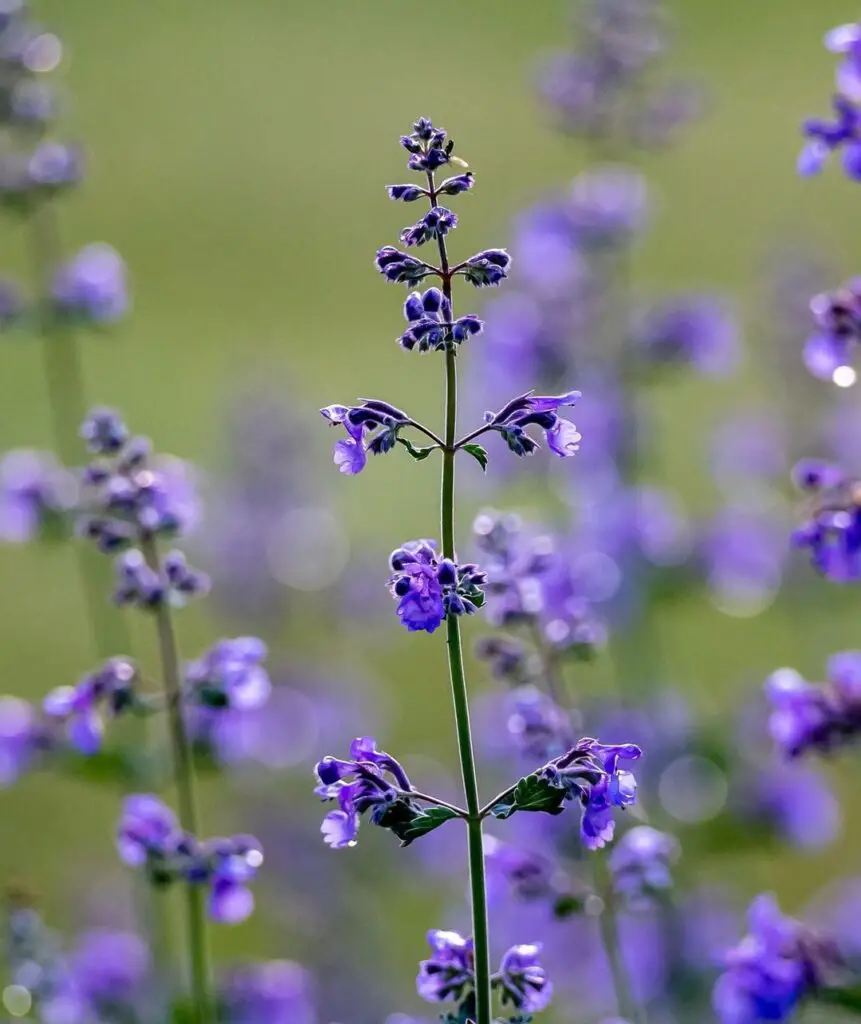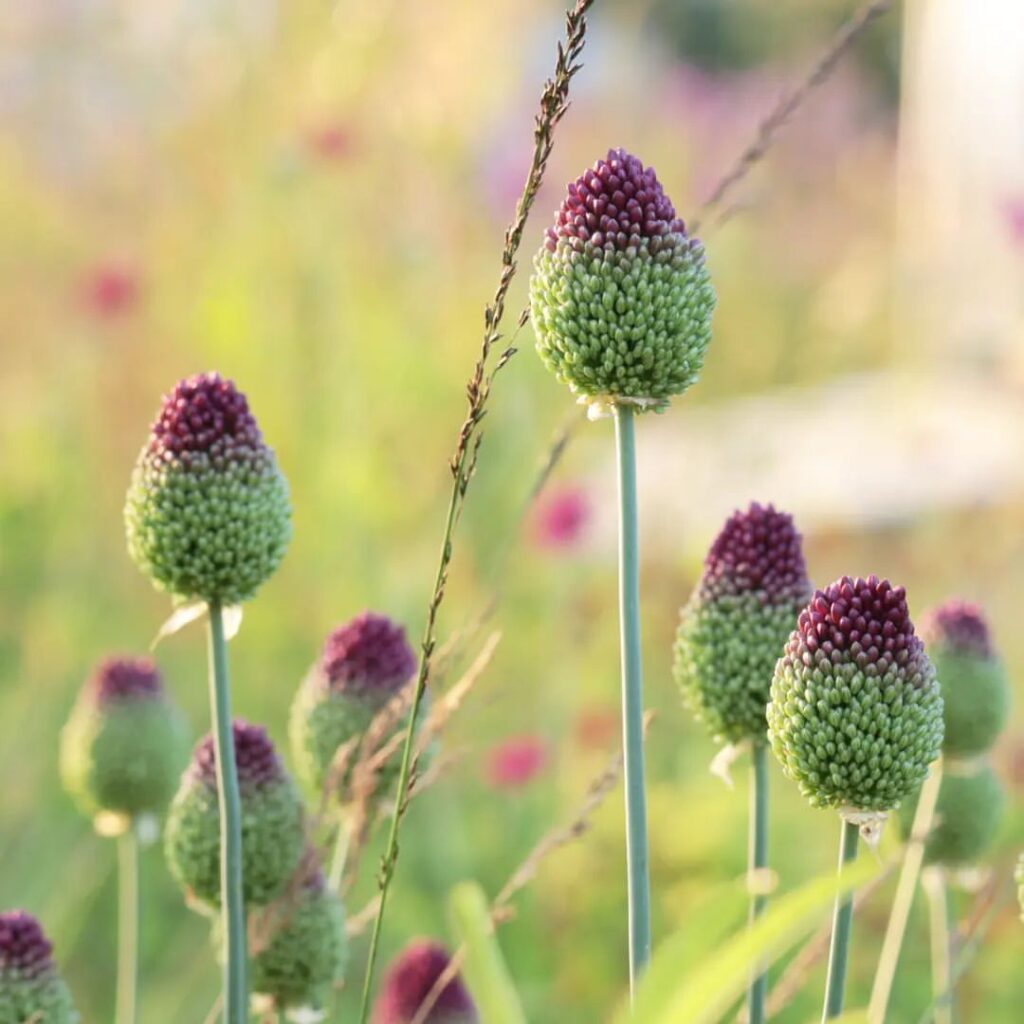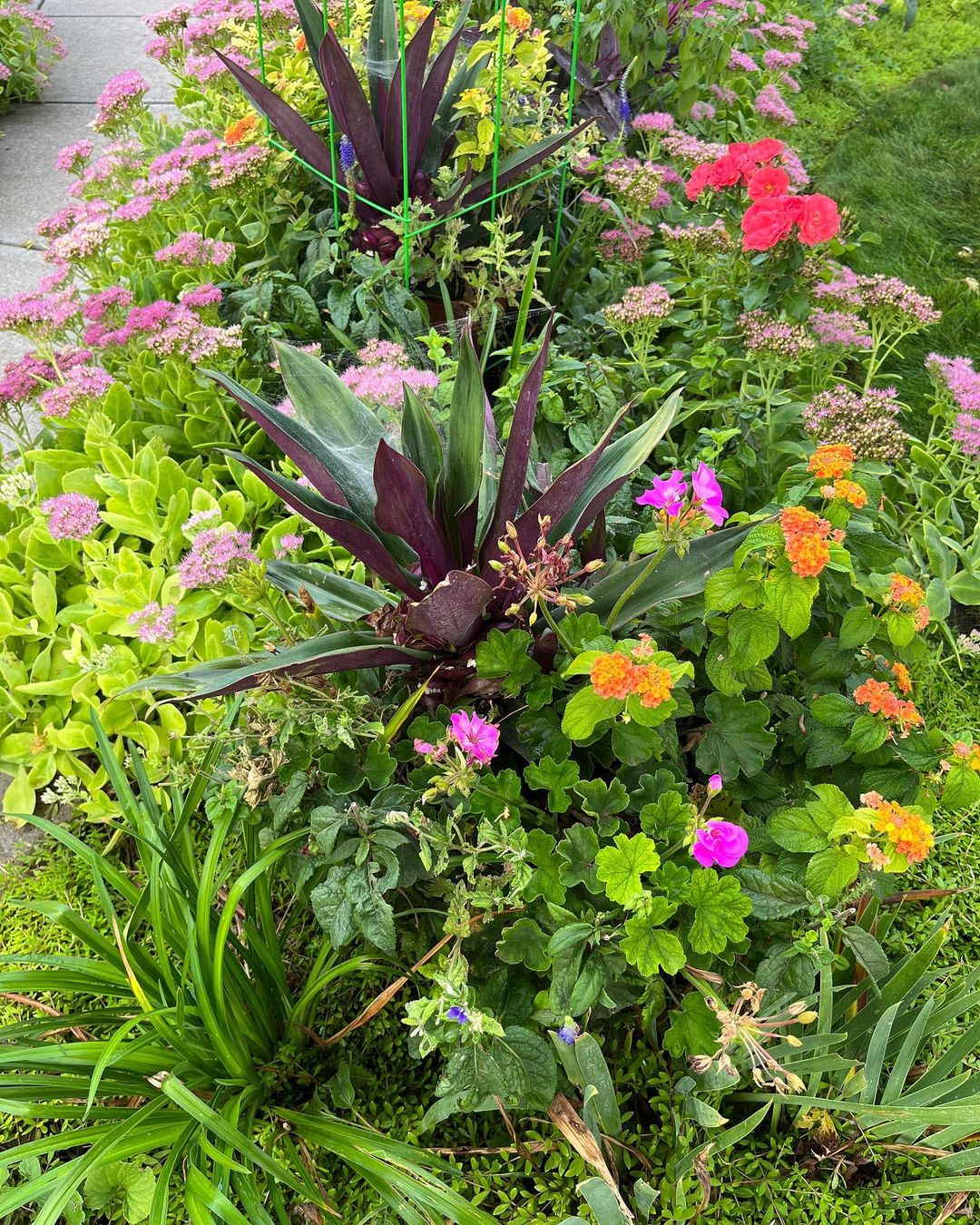Companions for Drift Roses: Enhancing Your Garden’s Charm
Drift roses, with their low-growing habit and abundant blooms, are like miniature bursts of color that can transform any garden corner into a vibrant tapestry. Choosing the right companions for these versatile plants can elevate their beauty and create striking contrasts or harmonious blends that captivate the eye and nurture the soul.
Imagine a garden where delicate drift roses cascade over garden edges like living waterfalls, their petals whispering secrets of beauty and resilience. Paired strategically with companions like lavender, whose soothing fragrance mingles with the roses’ sweet scent, or the sturdy greenery of ornamental grasses that provide a textural backdrop, drift roses come alive in a symphony of colors and forms.
Whether you’re seeking a cottage garden’s romantic allure or a modern landscape’s structured elegance, the art of choosing companions for drift roses offers endless possibilities to cultivate a garden that not only flourishes but also inspires admiration and joy.

Companions For Drift Roses: What To Plant With Drift Roses?
We’ll discuss the topic step by step. So, bear with us, and let’s dive into it:
Tips for Growing Companion Plants Alongside Roses
Growing companion plants alongside roses can enhance their beauty and support their growth. Here are some essential tips to ensure a thriving garden:
1. Choose Complementary Plants:
Select companion plants that complement roses in terms of color, height, and blooming seasons. For instance, planting lavender (Lavandula) alongside roses not only adds a contrasting color palette but also attracts pollinators beneficial to both plants.
2. Consider Soil and Sun Requirements:
Ensure that companion plants have similar soil and sunlight preferences as roses. Plants like catmint (Nepeta) thrive in well-drained soil and full sun, making them ideal companions for sun-loving rose varieties.
3. Planting Distance and Arrangement:
Space companion plants strategically to avoid competition for nutrients and sunlight. Plant taller companions such as delphiniums (Delphinium) or foxgloves (Digitalis) behind roses to create depth and visual interest without shading the rose bushes.
4. Provide Adequate Watering and Mulching:
Maintain consistent watering practices to support both roses and their companions. Apply organic mulch around plants to retain moisture and suppress weeds, benefiting the entire garden ecosystem.
5. Monitor for Pests and Diseases:
Regularly inspect plants for pests and diseases that may affect both roses and their companions. Companion plants like marigolds (Tagetes) can deter harmful insects while enhancing the garden’s overall aesthetic.
By following these tips, you can create a harmonious garden where roses and their companion plants thrive together, creating a picturesque landscape that delights throughout the growing season.

40 Companion Plants for Drift Roses
1. Bellflower
Bellflowers (Campanula) are excellent companions for Drift Roses due to their delicate bell-shaped blooms that complement the rose’s cascading habit. They thrive in similar growing conditions, preferring well-drained soil and full sun to partial shade. Bellflowers come in various heights, making them versatile for garden borders or mixed beds with Drift Roses.
2. Catmint
Catmint (Nepeta) is a drought-tolerant perennial that pairs well with Drift Roses, offering a contrasting texture with its aromatic foliage and spikes of lavender-blue flowers. It attracts pollinators like bees and butterflies, benefiting both plants in the garden ecosystem.

3. Blue False-Indigo
Blue false-indigo (Baptisia) is a native perennial known for its pea-like blue flowers and attractive foliage. It thrives in sunny locations and well-drained soil, providing a structural element that complements the soft blooms of Drift Roses.
4. Anise-Hyssop
Anise-hyssop (Agastache) offers spikes of lavender-blue flowers that attract pollinators and provide a vertical accent next to Drift Roses. It prefers full sun and well-drained soil, making it a low-maintenance companion plant.
5. Garden Phlox
Garden phlox (Phlox paniculata) adds a burst of color with its fragrant clusters of pink, purple, or white flowers. It thrives in moist, well-drained soil and complements Drift Roses in cottage garden settings or mixed perennial borders.

6. Globe Thistle
Globe thistle (Echinops) features striking spherical blue flowerheads that contrast beautifully with the soft petals of Drift Roses. It prefers sunny locations with well-drained soil and attracts beneficial insects to the garden.
7. Alliums
Alliums offer architectural interest with their globe-shaped flowerheads atop tall stalks. They come in various sizes and shades, complementing Drift Roses in both formal and informal garden designs.

8. Snapdragons
Snapdragons (Antirrhinum) provide vertical accents and a wide range of colors that can harmonize or contrast with Drift Roses. They thrive in cooler temperatures and well-drained soil, making them ideal for spring and fall planting alongside roses.
9. Pincushions
Pincushion flowers (Scabiosa) offer a whimsical touch with their pincushion-like blooms atop slender stems. They attract butterflies and bees while providing a delicate texture that complements the dense growth of Drift Roses.
10. Parsley
Parsley (Petroselinum) is a versatile herb that can be grown as an edging plant or filler alongside Drift Roses. Its lush foliage adds a contrasting texture and culinary usefulness to the garden.
11. Marigolds
Marigolds (Tagetes) are known for their vibrant orange and yellow blooms that deter pests and attract pollinators. They thrive in full sun and well-drained soil, making them ideal companions for Drift Roses in summer gardens.
12. Shasta Daisy
Shasta daisies (Leucanthemum x superbum) offer classic white blooms that contrast beautifully with the colorful drifts of roses. They prefer full sun and well-drained soil, making them a reliable perennial companion.
13. Baby’s Breath
Baby’s breath (Gypsophila) provides delicate white blooms that create a soft, airy backdrop for Drift Roses in garden borders or floral arrangements. It prefers full sun and well-drained soil.
14. Foxgloves
Foxgloves (Digitalis) offer tall spikes of tubular flowers in shades of pink, purple, white, or yellow. They thrive in partial shade and well-drained soil, adding vertical interest and a cottage garden charm alongside Drift Roses.
15. Geraniums
Geraniums (Pelargonium) are versatile annuals or perennials that come in various colors and growth habits. They thrive in sunny locations and well-drained soil, providing continuous blooms that complement Drift Roses throughout the growing season.
16. Germander
Germander (Teucrium) offers compact growth and lavender-colored flowers that attract bees and butterflies. It prefers full sun and well-drained soil, making it an excellent low-maintenance companion plant for Drift Roses.
17. Lady’s Mantle
Lady’s mantle (Alchemilla) features scalloped leaves and frothy clusters of chartreuse flowers. It thrives in partial shade and moist soil, providing a contrasting texture and color that enhances Drift Roses in garden borders.
18. Lavender
Lavender (Lavandula) is prized for its fragrant blooms and silvery foliage. It thrives in sunny, well-drained soil and complements Drift Roses with its Mediterranean charm and ability to attract pollinators.
19. Lilies
Lilies (Lilium) offer dramatic blooms in various colors and heights. They prefer well-drained soil and full sun to partial shade, adding vertical interest and a sophisticated touch to garden beds with Drift Roses.
20. Meadow Sage
Meadow sage (Salvia nemorosa) provides spikes of blue, purple, or white flowers that attract pollinators and complement the compact growth of Drift Roses. It thrives in full sun and well-drained soil.
21. Ornamental Onions
Ornamental onions (Allium) offer globe-shaped flowerheads atop tall stalks in shades of purple, pink, or white. They thrive in sunny locations with well-drained soil, providing architectural interest alongside Drift Roses.
22. Russian-Sage
Russian-sage (Perovskia) features aromatic silver-gray foliage and spikes of lavender-blue flowers. It thrives in sunny, well-drained soil, adding a drought-tolerant and airy presence next to Drift Roses.
23. Sea Holly
Sea holly (Eryngium) offers spiky blue or silver flowerheads that attract pollinators and provide a unique texture in garden borders with Drift Roses. It prefers full sun and well-drained soil.
24. Spurge
Spurge (Euphorbia) offers a diverse range of species with colorful foliage and unique flower structures. It thrives in sunny locations with well-drained soil, providing a striking contrast to the soft blooms of Drift Roses.
25. Wormwood
Wormwood (Artemisia) features silvery foliage and a compact growth habit that contrasts beautifully with Drift Roses. It prefers full sun and well-drained soil, offering a drought-tolerant option for garden borders.
26. Yarrow
Yarrow (Achillea) offers flat-topped clusters of flowers in shades of yellow, pink, or white. It thrives in sunny locations and well-drained soil, attracting beneficial insects and enhancing the visual appeal of Drift Roses.
27. Annual Phlox
Annual phlox (Phlox drummondii) provides masses of colorful blooms in shades of pink, red, purple, or white. It thrives in full sun and well-drained soil, offering continuous summer color alongside Drift Roses.
28. Four O’Clock
Four o’clock (Mirabilis jalapa) offers fragrant tubular flowers that open in the late afternoon and evening. It thrives in sunny locations and well-drained soil, providing a whimsical touch to garden beds with Drift Roses.
29. Heliotrope
Heliotrope (Heliotropium) offers clusters of purple, blue, or white flowers with a vanilla-like fragrance. It thrives in full sun and well-drained soil, attracting butterflies and adding a sweet scent to garden borders with Drift Roses.
30. Lantana
Lantana (Lantana camara) offers clusters of colorful flowers that attract butterflies and hummingbirds. It thrives in full sun and well-drained soil, providing continuous blooms alongside Drift Roses throughout the growing season.
31. Larkspur
Larkspur (Consolida ajacis) offers spikes of blue, pink, or white flowers that resemble delphiniums. It thrives in full sun and well-drained soil, adding vertical interest and cottage garden charm to beds with Drift Roses.
32. Million Bells
Million bells (Calibrachoa) offers cascading flowers in shades of pink, purple, or yellow. It thrives in full sun and well-drained soil, providing continuous blooms and a trailing habit that complements Drift Roses in containers or hanging baskets.
33. Pansies
Pansies (Viola) offer cheerful blooms in shades of purple, yellow, white, and orange. They thrive in cool weather and well-drained soil, providing early spring or fall color alongside Drift Roses in garden beds or borders.
34. Persian Shield
Persian shield (Strobilanthes dyerianus) offers striking purple foliage that contrasts beautifully with the soft blooms of Drift Roses. It thrives in partial shade and moist, well-drained soil, adding a tropical flair to garden settings.
35. Summer Snapdragon
Summer snapdragon (Angelonia) offers spikes of flowers in shades of pink, purple, or white. It thrives in full sun and well-drained soil, providing continuous blooms and vertical interest alongside Drift Roses in summer gardens.
36. Flowering Tobacco
Flowering tobacco (Nicotiana) offers fragrant tubular flowers that attract hummingbirds. It thrives in full sun to partial shade and well-drained soil, adding height and
37. Blue Mist Shrub
Blue mist shrub (Caryopteris) offers clusters of blue flowers that attract butterflies and bees. It thrives in full sun and well-drained soil, providing late summer color and texture alongside Drift Roses in garden borders.
38. Boxwood
Boxwood (Buxus) offers evergreen foliage and a compact growth habit that provides year-round structure and contrast with Drift Roses. It thrives in partial shade to full sun and well-drained soil, adding formal elegance to garden designs.
39. Daphnes
Daphnes (Daphne spp.) offer fragrant blooms and evergreen foliage that provide year-round interest alongside Drift Roses. They prefer partial shade to full sun and well-drained soil, adding a delicate fragrance and texture to garden borders or containers.
40. Spirea
Spirea (Spiraea spp.) offers clusters of white, pink, or red flowers and deciduous foliage that complement the compact growth of Drift Roses. They thrive in full sun to partial shade and well-drained soil, providing a burst of color and structure in mixed borders or as hedge plants.
What Not To Plant With Roses
When planning your garden, it’s crucial to consider not only what will complement your roses but also what might hinder their growth and health. Certain plants, despite their beauty or appeal, can be detrimental to roses due to competition for resources, susceptibility to similar pests and diseases, or conflicting soil requirements.
1. Avoid Competition for Nutrients:
Roses are heavy feeders, requiring rich, well-draining soil to thrive. Plants with aggressive root systems or those that require similar nutrients can compete with roses, leading to stunted growth and reduced vigor. Examples include large shrubs like rhododendrons or vigorous groundcovers such as ivy.
2. Beware of Pests and Diseases:
Some plants are susceptible to pests and diseases that can easily spread to roses. For instance, plants prone to powdery mildew or aphids, like certain types of phlox or dahlias, can create an environment conducive to outbreaks in nearby roses.
3. Consider Soil pH and Moisture Needs:
Roses prefer slightly acidic soil conditions (pH 6.0-6.5) and moderate moisture. Plants that require vastly different pH levels or excessive watering, such as hydrangeas or bog-loving plants like ferns, may not thrive alongside roses, leading to suboptimal conditions for both.
By carefully selecting companions that complement rather than compete with roses, you can create a harmonious garden that enhances the beauty and health of your roses while minimizing potential challenges.
Extra Tips When Choosing Companion Plants for Drift Roses
When selecting companion plants for drift roses, consider their growth habits and needs to ensure a harmonious garden landscape. Opt for plants that complement rather than compete with the low, spreading growth of drift roses. For instance, pairing them with groundcovers like creeping thyme or sedum not only enhances visual appeal but also helps suppress weeds and retain moisture, benefiting both plant types.
Another crucial consideration is seasonal interest. Choose companions that bloom at different times or offer year-round foliage to maintain visual interest throughout the year. Plants like dwarf evergreens or perennial herbs such as sage or lavender can provide structure and color during drift roses’ dormant periods.
Additionally, think about the environmental requirements of both plants. Drift roses thrive in full sun and well-drained soil, so select companions that share similar preferences to ensure they thrive together. Plants like ornamental grasses or drought-tolerant perennials such as yarrow or coreopsis can thrive in these conditions, creating a resilient and visually appealing garden bed.
By carefully selecting companion plants that complement drift roses’ unique characteristics and environmental needs, you can create a balanced and thriving garden landscape that enhances the beauty and longevity of your outdoor space.
Frequently Asked Questions
1. What are the best companion plants for drift roses?
Drift roses pair beautifully with lavender, whose fragrance complements their blooms, and with ornamental grasses that provide a contrasting texture. They also thrive alongside perennial favorites like salvia and daylilies, adding layers of color and form to your garden beds.
2. How do companion plants benefit drift roses?
Companion plants enhance the visual appeal of drift roses by providing contrast, texture, and additional seasonal interest. They can attract beneficial insects, improve soil health, and offer support for climbing varieties, creating a more dynamic and balanced garden environment.
3. Can drift roses be planted with other roses?
Yes, drift roses can be planted alongside other rose varieties like hybrid teas, floribundas, and shrub roses. When choosing companions, consider their growth habits and care needs to ensure they complement each other without competing for space or resources.
4. What are some tips for designing a garden with drift roses and companions?
When designing with drift roses, think about color schemes, bloom times, and plant heights. Mix low-growing companions like sedum or creeping thyme at the front for a cascading effect, and use taller plants like coneflowers or Russian sage in the background to create depth and interest.
Conclusion
Incorporating companion plants with drift roses enriches your garden in myriad ways. By carefully selecting plants that complement their colors and textures, such as lavender and ornamental grasses, you can create a visually captivating landscape that evolves throughout the seasons.
These companions not only enhance the aesthetic appeal but also contribute to the overall health of your garden ecosystem, attracting beneficial insects and improving soil vitality. Whether you’re aiming for a structured design or a cottage garden charm, the artful combination of drift roses with compatible plants ensures a garden that delights and inspires year-round.

I’m Shofi, a passionate gardener and blogger. I have 10+ years of experience in gardening and hold certifications in horticulture and garden design. I share my knowledge and skills through my garden blog to inspire and educate others on the joys of gardening. I try to provide valuable information and create a community for gardeners of all levels to connect and learn. My ultimate goal is to inspire others to start their own gardens and connect with nature.

